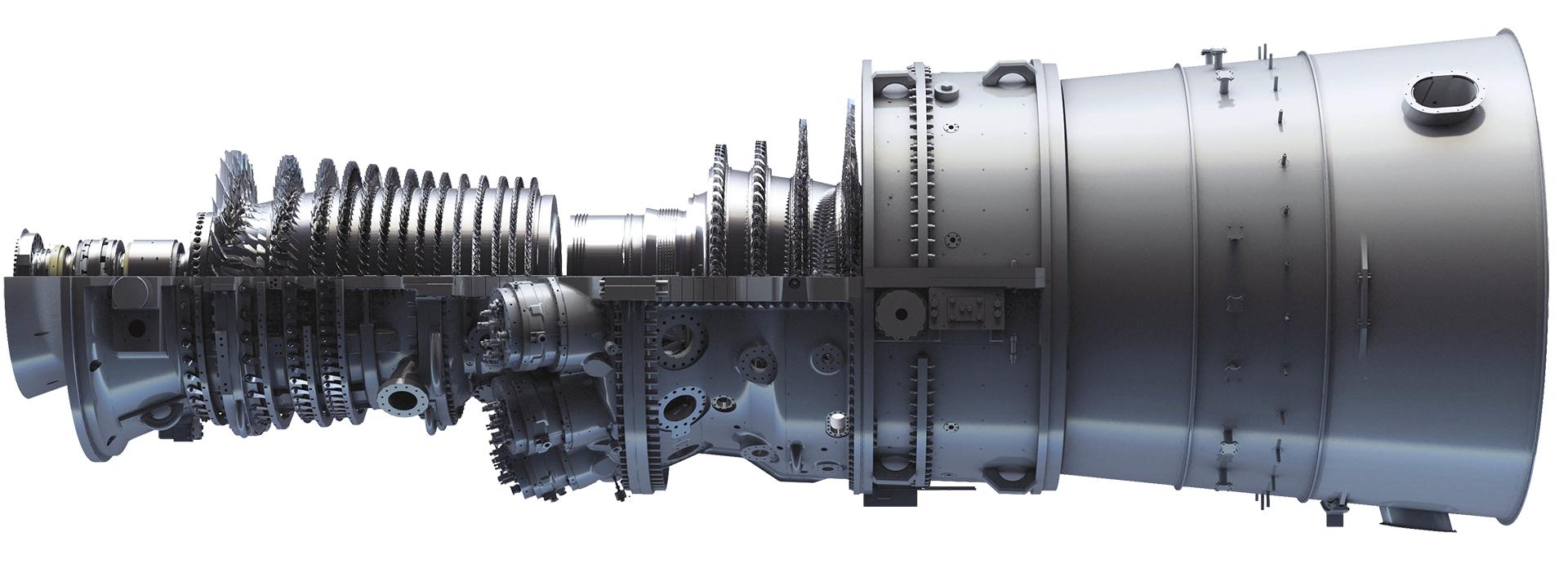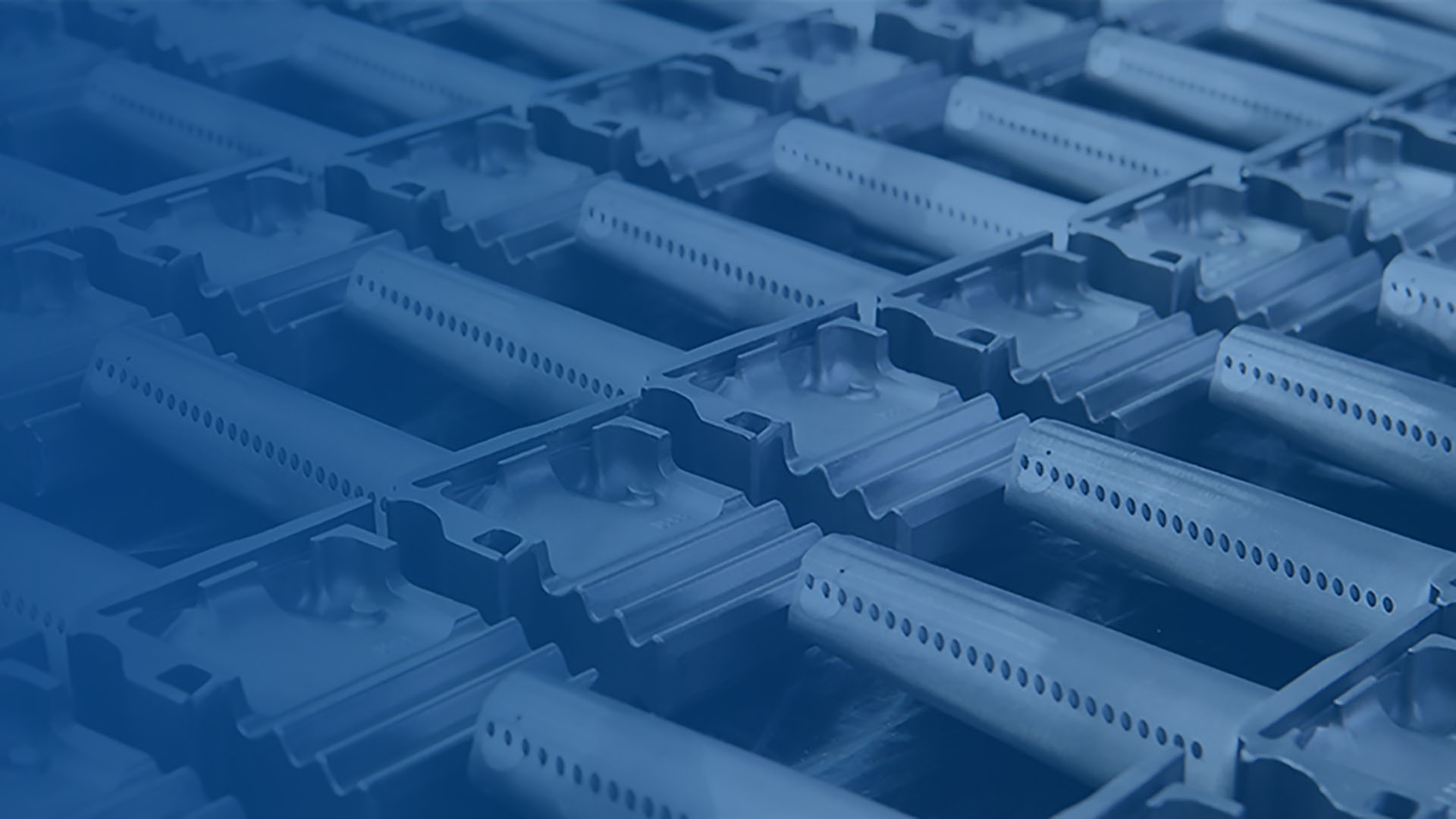Explore the 9E
9E gas turbine features and benefits
The 9E is a robust, proven platform that helps deliver high availability, reliability, and durability while lowering the overall cost-per-kilowatt.

Providing the widest range of fuels experience
9E gas turbines can use more than 52 types of fuel— almost the entire fuel spectrum—and can even switch fuels while running under full load. Our 9E turbines operate on fuels with contaminants, natural gas, light and heavy distillate oil, naphtha, crude, residual oil, syngas, and steel mill/blast furnace gases.

9E.04 gas turbine: Enhanced power and performance
The 9E.04 gas turbine has multiple features that help reduce fuel costs and increase revenue, such as a 145 MW output and 37% simple-cycle efficiency.

A proven performer
The 9E gas turbine utilizes proven E- and F-class materials, fired at lower E-class temperatures for hot gas path, with cooling and sealing improvements, improved clearances and improved work splits between stages.
It’s a strong performer in a variety of scenarios, including simple-cycle, combined-cycle, and industrial CHP and mechanical drive applications in a broad range of industries, including electrical utilities/independent power producers, industrial oil and gas refineries, IWPP, aluminum industry for smelting, steel mills, and LNG.

Lowered emissions and enhanced features
The 9E gas turbine boasts Dry Low NOx (DLN) combustion with 5ppm NOx* and 25 ppm CO with around 30% Modified Wobbe Index (MWI) flexibility, and emissions standards that help meet World Bank requirements, including dual-fuel heavy fuel oil plants.
The 9E.04 gas turbine features a new 4-stage turbine module that fits within the same footprint as an already installed 9E gas turbine unit. Additionally, it has a 17-stage compressor with corrosion-resistant material, coatings, and inner barrel brush seals that can enhance compressor durability. Its compact footprint helps it create an easy incremental power addition when phased capacity expansion is required.
*Assumes ultra-low NOx option is chosen
Webinar
Unlocking technology: How to utilize predictive and prescriptive analytics
Are you struggling with aging equipment and high maintenance costs? Discover how GE Vernova's predictive and prescriptive analytics can help reduce unplanned downtime and enhance availability, while shifting you from reactive to proactive maintenance strategies.
Tom Freeman
Chief Customer Consultant, GE Vernova
Ben Myers
Global Monitoring & Diagnostics Leader, GE Vernova
Truman Hwang
Product Manager, GE Vernova
Janet Webb
Senior Product Manager, GE Vernova

Specifications
Power and performance
Get an inside look at the 9E gas turbine’s product specifications

Specifications shown are 50 Hz
| 9E.03 | 9E.04 | |
|---|---|---|
| Net output (MW) | 132 | 147 |
| Net heat rate (Btu/kWh, LHV) | 9960 | 9238 |
| Net heat rate (kJ/kWh, LHV) | 10508 | 9747 |
| Net efficiency (%, LHV) | 34.3% | 36.9% |
| Ramp Rate (MW/minute) | 50 | 29 |
| Startup Time (RR Hot, Minutes) | 30 | 30 |
9E series gas turbines can run on 52 types of fuel.
NOTE: All ratings are based on ISO conditions and natural gas fuel. Actual performance will vary with project-specific conditions and fuel.
Customer stories
-
West Africa Energy—becoming Senegal’s biggest plant
-
Wuhan Iron and Steel grows its operations—responsibly
-
Helping mitigate shifting dynamics in Japan
-
West Africa Energy—becoming Senegal’s biggest plant
-
Wuhan Iron and Steel grows its operations—responsibly
-
Helping mitigate shifting dynamics in Japan
West Africa Energy—becoming Senegal’s biggest plant
Senegal is in need of the right gas-power technology to grow its renewables. See how GE Vernova’s advanced 9E gas turbines became the core of West Africa Energy’s combined-cycle plant. The 300-MW power plant will soon be the country’s largest—expected to generate nearly 25% of nationally consumed power.
300 MW
of projected total plant power
500,000+
Sengalese homes can benefit

"We are pleased to collaborate with GE Vernova to deliver reliable and efficient gas turbines to Senegal, aligning with our strategy of gas to power. This project will go a long way in reducing the cost of electricity in the country.”
Samuel Sarr
CEO of West African Energy
Wuhan Iron and Steel grows its operations—responsibly
In 2007, the Chinese company built the world’s largest blast furnace gas power plant, reusing the mill’s own blast furnace and coke oven waste gases to fuel two GE Vernova 9E gas turbines. The Wuhan plant produces 260 tons of steam per hour for steel production and generates 2.4 billion kWh of electricity, with an annual output of 1 TWh. Utilizing waste gas provides a number of benefits, and the mill also saves a great deal of money by generating 164 MW of its own electricity.
>42%
electrical efficiency
2 million tons
reduction in CO2 emissions

"One of the greatest challenges to the steel industry around the world is effectively addressing increased emissions regulations while controlling spiraling costs. This milestone project with Wuhan Iron and Steel will allow BFG flares to be captured with higher efficiency and lower emissions to recycle energy back into the plant."
Jack Wen
GE Vernova Gas Power, China
Helping mitigate shifting dynamics in Japan
With nuclear power generation cut almost entirely, Japan has been experiencing difficulty in electricity shortages, especially during peak summer months. Tokyo Electric Power Company (TEPCO) was seeking to upgrade Block 1 of their Futtsu Thermal Power Station. The goal is to boost output and enhance heat rate, all while continuing to use existing steam turbines and generators.
In operation for three decades, the six older 9E gas turbines at Futtsu Block 1 are well-suited for GE Vernova Vernova’s 9E.04 flange-to-flange solution. This consists of new gas turbine components and a step from three- to four-stage, which increases hot gas components from nine to 12.
combustion efficiency improvements
167 MW
turbine output increase

Further reading
Learn more
9E gas turbine information
Contact us
Want to learn more about the 9E gas turbine?
Former names of GE Vernova 9E gas turbines: Frame 9E, 9E, 9E 3-Series, 9141(E), 9151(E), 9161(E), 9171(E), PG9141E, PG9151E, PG9161E, PG9171E, 9E PIP, 9E AGP, 9E Syngas, 9E BFG, MS9001(E)

















